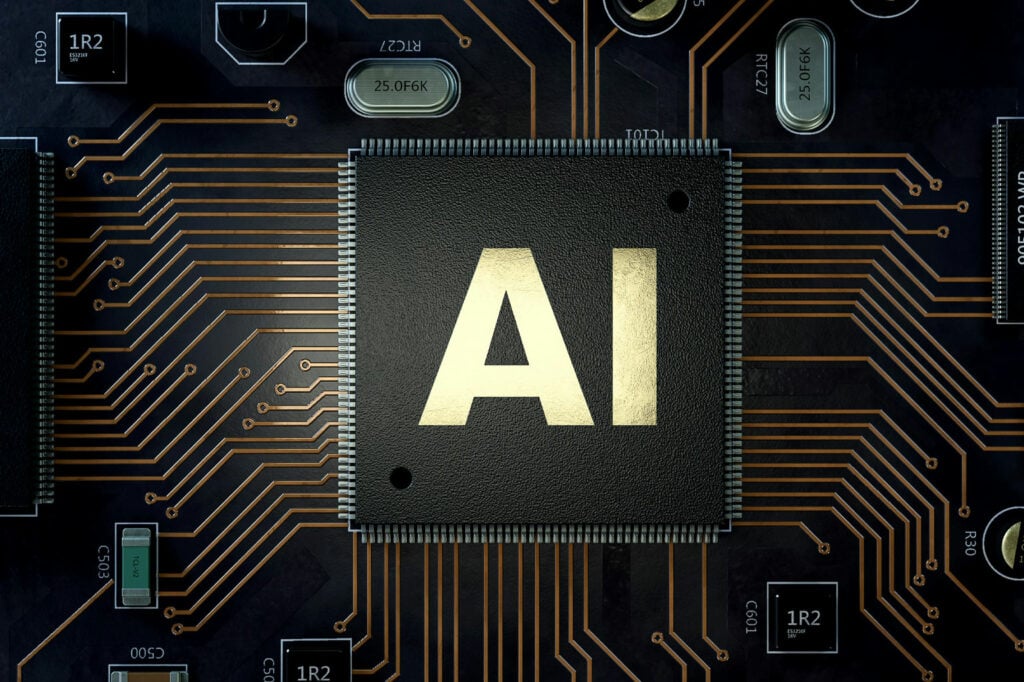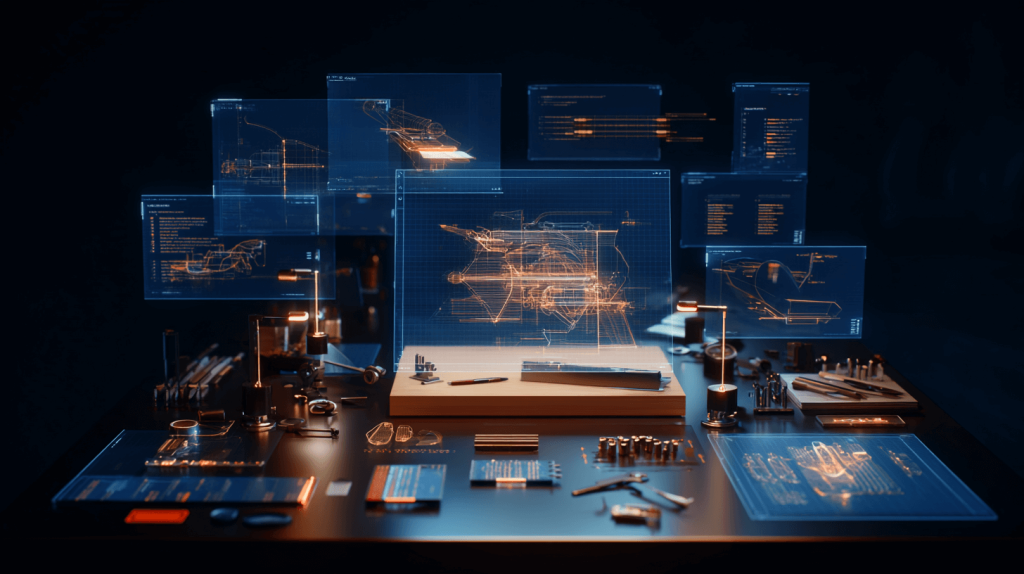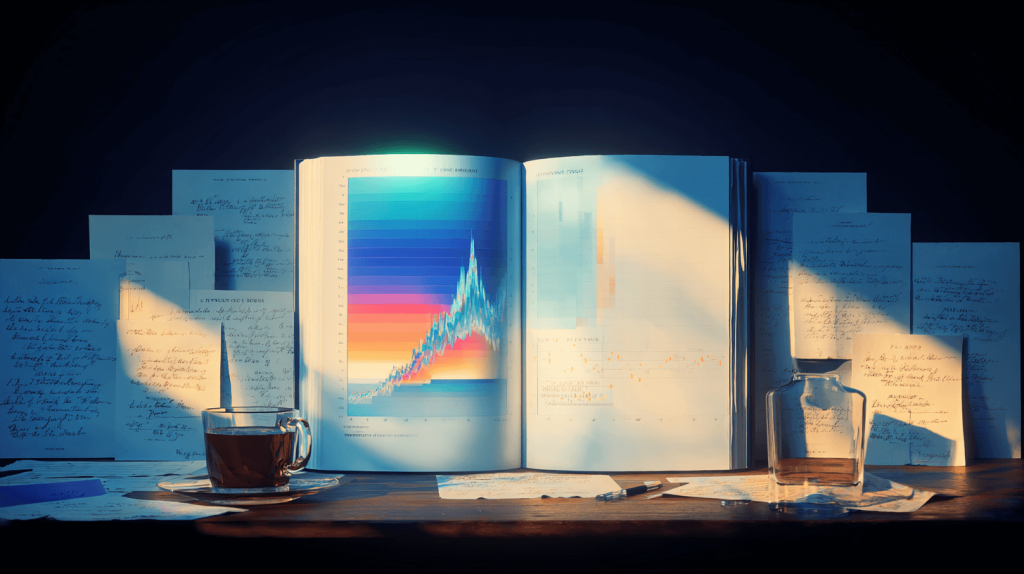Worried about keeping up with the rapid pace of AI advancements in the SaaS industry? As AI technology rapidly evolves, it is becoming essential for SaaS founders to protect their innovative features. The competitive edge provided by novel AI-driven solutions can only be maintained if these innovations are safeguarded against imitation. This is where patents on Artificial Intelligence come into play. They ensure that your unique AI features are legally protected, giving you a secure foundation to build upon.
First and foremost, can AI-assisted inventions be patented? Absolutely, and understanding how to navigate the complexities of this process, including the requirements for patent applications involving AI, is crucial for innovators looking to protect their groundbreaking work.
This comprehensive cheatsheet is designed to help you grasp the patent eligibility of AI-related inventions, providing you with the knowledge and insights needed to secure your intellectual property. Whether you’re an inventor, entrepreneur, or legal professional, this article will equip you with the tools to successfully patent your AI-assisted innovations and stay ahead in the competitive landscape of technological advancement.
Why Read This Article?
- Gain a comprehensive understanding of how AI-assisted inventions can be patented, ensuring you stay informed about the latest legal standards and requirements for human inventorship. The guidance issued by the United States Patent and Trademark Office (USPTO) regarding AI-assisted inventions is crucial in this context.
- Learn about the evolving legal framework for AI-assisted patents, helping you navigate the complexities of patent law and secure your intellectual property.
- Discover the importance of clear documentation of human contributions in AI-assisted inventions, emphasizing the necessity of significant human involvement in the inventive process.
By reading this article, you’ll equip yourself with the knowledge and insights needed to successfully patent your AI-assisted innovations, giving you a competitive edge in the rapidly advancing field of technology.
The Role of AI Systems in Modern Inventions
Numerous sectors have integrated AI systems, which are now driving significant discoveries and advancements. Here are some examples:
- In clean energy, AI helps optimize power grids and predict energy consumption patterns, leading to more efficient and sustainable energy use.
- The aerospace industry leverages AI for designing advanced materials and autonomous flight systems, pushing the boundaries of what’s possible.
- In the medical field, AI-assisted robots perform surgeries with precision, reducing blood loss and infection risks, showcasing how AI enhances human capabilities in critical applications.
- In the tech industry, AI-driven algorithms are used to develop cutting-edge software, streamline coding processes, and enhance cybersecurity measures, providing robust protection against evolving threats.
- AI is also revolutionizing the automotive sector by enabling the development of self-driving cars, which rely on advanced machine learning models to navigate complex environments and ensure passenger safety.
- The entertainment industry benefits from AI through personalized content recommendations, realistic CGI in movies, and interactive gaming experiences, making entertainment more immersive and tailored to individual preferences.
- In the finance sector, AI is also leaving its mark by using its ability to analyze vast datasets to detect fraudulent behavior and safeguard financial transactions.
Organizations are utilizing AI to facilitate seamless collaboration through automated communication tools and virtual meeting platforms, which helps break down barriers and foster innovation. These examples illustrate the profound impact of AI systems on the invention creation process, highlighting the blend of human ingenuity and cutting-edge technology in modern innovations.
Can AI Be Patented? Patent Eligibility for AI Assisted Inventions
The question regarding the patentability of software integrated with AI technology is multifaceted. While software inventions incorporating AI can receive patent protection, it’s imperative that they meet certain criteria. The US Patent and Trademark Office (USPTO), along with international counterparts, requires that these inventions demonstrate novelty, non-obviousness, and utility.
There has been a notable increase in patent applications for AI-based inventions, highlighting the growing interest in this field. For these inventions to be eligible for patent protection, they must meet specific criteria, including demonstrating a significant human contribution to the inventive process.
For a software invention with AI technology to be patentable, it must offer a technical solution to a technical problem. This means the invention should provide a concrete improvement in the functioning of a computer or other technological field. For instance, an AI algorithm that optimizes data processing in a novel way or enhances cybersecurity measures could be considered patentable.
Judicial decisions and guidelines from patent offices emphasize the importance of demonstrating how the AI technology contributes to the overall functionality of the software. According to rulings by the U.S. Federal Circuit Court, software inventions that merely automate existing processes without adding significant technical improvements may not meet the patentability criteria. Concurrently, leading authorities such as the European Patent Office and judicial bodies in jurisdictions like Australia’s Federal Court have similar standards, underscoring the necessity for tangible technical contributions within software inventions involving AI.
This standard concerning what constitutes a patentable software invention with AI integration holds true across various types of patents, including utility models and design patents. Each mandates significant technical contributions from the invention. Professionals dealing with such IP matters must ensure compliance within these established legal parameters so that any software invention merging both human ingenuity and AI technology stands up to scrutiny regarding its eligibility protection.
Legal Framework Surrounding AI Inventions and Patents on Artificial Intelligence
To effectively manage the legal aspects of AI inventions in the U.S., it is crucial to understand the existing policies and directives. The USPTO states that only ‘natural persons’ can be named inventors on U.S. patent filings, emphasizing the necessity of human contribution.
The USPTO has introduced updated guidelines to address the complexities of AI-assisted inventions. According to the United States Patent and Trademark Office (USPTO), there has been significant patent activity and granted patents in areas such as artificial intelligence, generative AI, and other emerging AI technologies in the United States. For an AI-related invention to be patentable, it must meet the criteria of novelty, non-obviousness, and utility. The invention should offer a technical solution to a technical problem, demonstrating a concrete improvement in the functioning of a computer or other technological field. This means that merely automating existing processes with AI is not enough; the AI must contribute significantly to the innovation.
Judicial decisions, such as those from the U.S. Federal Circuit Court, highlight the importance of demonstrating how AI technology contributes to the overall functionality of the invention. Software inventions that merely automate existing processes without adding significant technical improvements may not meet the patentability criteria.
The USPTO’s guidance on AI-assisted inventions, although not legislative, significantly influences practice standards. It is essential for inventors and IP professionals to stay informed about these guidelines to ensure compliance and adequately protect their AI-related creations. By understanding and navigating these legal frameworks, innovators can secure robust patent protection for their AI-assisted inventions.
Inventorship Guidance for AI Assisted Inventions
The pivotal role in inventorship for AI-assisted inventions is played by the concept of significant contribution. A natural person must provide substantial innovation to the conception of an AI-assisted invention, beyond simple usage or supervision of the AI system, to be recognized as its inventor. According to the USPTO and the Federal Circuit’s verdict in Thaler v. Vidal, inventive actions are intellectual tasks exclusive to human beings.
Simply realizing an invention does not equate to a significant contribution. Instead, notable involvement, like devising a critical element that becomes part of the claimed invention, is necessary. On the other hand, having authority or management without materially contributing to the invention does not qualify one as an inventor. This ensures rightful recognition for the genuine creators behind AI-assisted inventions.
When filing a patent application for an AI-assisted invention, it is essential to name individuals who have significantly contributed through their creativity. Emphasis should be placed on naming those who have made a substantial impact on the inventive process, ensuring that patents honor the true inventors who drive innovation, even when using AI tools.
In summary, significant human contribution is crucial for inventorship in AI-assisted inventions. It safeguards the recognition of genuine inventors and ensures that the patent system honors human creativity and innovation.
AI Patent Examples: Successful Patents on AI Related Inventions
Studying the patents related to artificial intelligence that have been successful can shed light on how AI is practically used across multiple industries. One notable instance of this is Google’s Tensor Processing Unit (TPU), which stands as a benchmark for machine learning tasks such as neural networks and is protected by in excess of 34 patent families. IBM has established itself at the forefront of artificial intelligence technology with nearly a thousand AI chip-related patents filed over two decades. Out of these, 75 were registered within just the last five years.
The Baidu Kunlun chip serves as another significant development within AI inventions, specifically fine tuned for processing visual data, speech recognition, and understanding natural language. It boasts an impressive speed claim—allegedly operating up to thirty times faster than FPGA-based solutions designed for accelerating AI processes. IBM’s cutting-edge processors incorporate both digital and analog cores dedicated to artificial intelligence applications capable of delivering quadruple performance increments while reducing power consumption by approximately three-quarters.
Key developments in this domain also include:
- Qualcomm’s Cloud AI 100 server processor engineered for executing decisions powered by artificial-intelligence from incoming streams of digital information.
- Intel showcases its considerable holdings in terms thanks to their suite of patented technologies regarding chips specialized in A.I.
- Through strategic acquisitions like Nervana Systems, Movidius, and Mobileye Intel expanded its already robust prowess in A.I., thereby laying groundwork that culminated into the release Neural Network Processors under brand name “Nervana”.
- Cambricon is distinguishing themselves through intellectual property efforts encompassing some sixty-three unique patent family entries centered around acceleration mechanisms geared towards neural network functions & machine vision algorithms
These instances serve not only as demonstration but celebration concerning plurality application areas coupled velocity progression, all happening since inception field known collectively as ‘artificial intelligence technology’, showing off myriad breadths pertaining variously conceived ‘artificial intelligence inventions’.
Challenges in Patenting AI Assisted Inventions
Several challenges arise when patenting AI-assisted inventions, primarily due to overcoming 101 and abstraction rejections. Patent eligibility under 35 U.S.C. § 101 requires that the invention is not merely an abstract idea, which is a common hurdle for AI-related patents. The USPTO and courts have stringent guidelines to determine whether an invention is directed to an abstract idea, and AI inventions often fall into this category due to their reliance on algorithms and data processing.
To overcome these rejections, it is crucial to demonstrate that the AI invention provides a technical solution to a technical problem. This means showing how the invention improves the functioning of a computer or other technological field in a concrete way. For instance, an AI algorithm that optimizes data processing in a novel manner or enhances cybersecurity measures can be considered patentable if it offers a tangible improvement over existing technologies.
Additionally, it is important to clearly articulate the inventive step and how it goes beyond merely automating existing processes. This involves detailing the specific technical contributions of the AI system and how it integrates with other components to achieve a practical application. Careful documentation and thorough explanation of the technical aspects can help in addressing and overcoming abstraction rejections.
These challenges underscore the importance of meticulous patent drafting and a deep understanding of the legal standards for patent eligibility. Inventors and patent practitioners must work together to clearly define the technical contributions of AI-assisted inventions and demonstrate their practical applications to secure robust patent protection.
The Future of AI Systems in Intellectual Property
Significant transformation is on the horizon for the role of AI systems in intellectual property. The potential for AI systems to revolutionize traditional IP laws and practices could introduce new paradigms for patent protection and inventorship. Automated patent searches and AI-generated inventions may significantly alter the future of IP protection, making the process more efficient and comprehensive.
Blockchain technology offers a secure and transparent platform for managing intellectual property rights, ensuring that the contributions of both human inventors and AI systems are accurately recorded and protected. This technology could streamline the patent application process and provide a reliable record of inventorship, addressing some of the challenges posed by AI-assisted inventions.
To address the evolving IP landscape, a collaborative approach between businesses, legal experts, and technology innovators is essential. By workingtogether, these stakeholders can develop new frameworks and guidelines that accommodate the unique aspects of AI-assisted inventions, ensuring that the patent system remains robust and adaptable in the face of rapid technological advancements.
In 2022, 63.5% of issued U.S. utility patents were “software-related,” a figure that has remained relatively unchanged from the 63.1% reported in 2021. Similarly, 49.6% of granted European Patent Office (EPO) patents were “software-related,” showing little change from the 49.4% in 2021. In China, 43.5% of granted patents were “software-related,” marking an 8% increase from 40.2% in 2021.
Speak With An Experienced AI Patent Attorney About Patents on Artificial Intelligence
Navigating the realm of patent protection for AI-assisted inventions requires an expert’s touch. An initial step is to arrange a complimentary phone consultation with a seasoned IP attorney by filling out a form and selecting an appointment time, which usually ranges from 15 to 45 minutes in duration. This session offers tailored advice on how best to protect your intellectual property. Book a free IP strategy call here.
A proficient AI patent lawyer can shed light on several key areas:
- The complex nature of current patent law
- Ensuring that there is substantial human involvement in your invention
- Crafting effective strategies for attaining robust patent coverage for inventions assisted by AI
Get the peace of mind from knowing your IP will be secured or you don’t pay. The RLG Guarantee provides assurance in the quality of service, though exclusions apply. Learn more about The RLG Guarantee here.
Utilizing professional expertise is crucial when traversing the dynamic terrain of artificial intelligence and its interplay with intellectual property rights, providing the requisite safeguards so your inventive achievements are legally acknowledged and defended.
Summary of Patents on Artificial Intelligence
In summary, AI systems are driving significant advancements across various industries, but the complexities of patenting AI-assisted inventions require careful consideration of legal frameworks and inventorship guidelines. Understanding the requirements for patent applications involving AI is crucial. The USPTO’s emphasis on human contribution ensures that the patent system continues to reward human ingenuity, even as AI plays an increasingly prominent role in the inventive process. The United States Patent and Trademark Office provides essential guidance on the patentability of AI-assisted inventions.
As we look to the future, the intersection of AI and intellectual property will continue to evolve, with new technologies like blockchain offering promising solutions for managing IP rights. By staying informed and seeking professional guidance, inventors and patent practitioners can navigate these challenges and secure robust patent protection for their AI-assisted inventions.
Frequently Asked Questions
Can an AI be listed as an inventor on a patent?
No, only natural persons can be listed as inventors on a patent due to current legal guidelines.
What constitutes a significant contribution by a human inventor in an AI-assisted invention?
In an invention aided by AI, the considerable input of a human inventor is crucial, as it entails enhancing the conception of the invention with substantial value that goes above and beyond merely utilizing or managing the AI system.
Are there any exceptions to the rule that only natural persons can be inventors?
Yes, South Africa has granted a patent listing an AI system as the inventor, but this is an uncommon exception to the general rule.
How can blockchain technology impact intellectual property management?
By offering a secure and transparent platform for managing intellectual property rights, blockchain technology has the potential to significantly affect IP management. It ensures precise inventorship records while simplifying the patent application process.
Why is it important to consult with an AI patent attorney?
Seeking advice from an AI patent attorney is crucial as they provide specialized expertise in patent law and can help ascertain that your inventions, assisted by artificial intelligence, fulfill the requirements for obtaining patent protection.




